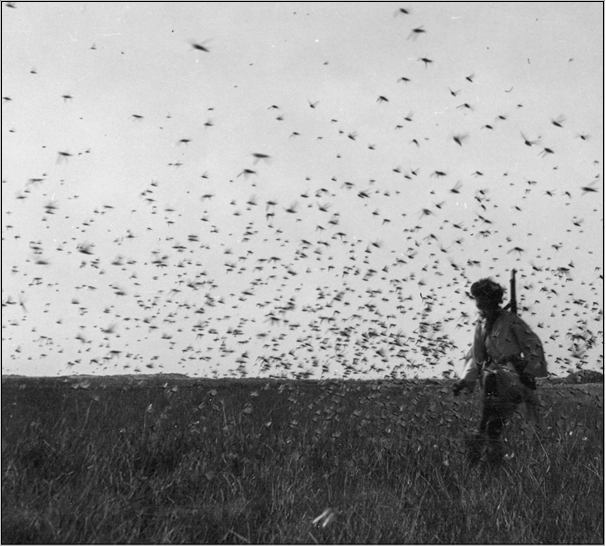On or around October 12, 1988, fishermen near the island of Trinidad, near Venezuela, came across thousands of dead locusts floating on the sea. Soon reports of live locusts were cropping up from scattered sites in the West Indies and northern South America—from Grenada, Guadeloupe, Jamaica, Antigua, Guyana, and Suriname, among other places. The locusts were memorable for their large size, pinkish color, and, in some places, their vast numbers; a supertanker nine hundred miles southeast of St. Lucia became a landing spot for so many of these insects that the entire deck was awash in pink, while on Dominica a single swarm (one of six reported there) was estimated to contain some 10 million to 20 million individuals. The locusts appeared to be weather-beaten and starving, as if they had endured a long and harrowing journey, which indeed they had: they were desert locusts, Schistocerca gregaria, an Old World species, and they had just flown across the Atlantic Ocean.
In North Africa, plagues of locusts have devastated crops throughout history—swarms are referred to as the “teeth of the wind”—and farmers and government officials in the Caribbean imagined such a disastrous outcome from the 1988 invasion. Fortunately, that scenario never materialized. The damage caused by the desert locusts was minimal, and the species quickly disappeared and has not been reported again in the Americas. However, recent DNA studies indicate that desert locust ancestors or their close relatives were more successful in the deeper past; within the past several million years, they successfully dispersed across the Atlantic from Africa, perhaps several times, and very rapidly gave rise to some fifty New World species.
Locust swarm in North Africa. Photo by Eugenio Morales Agacino.
